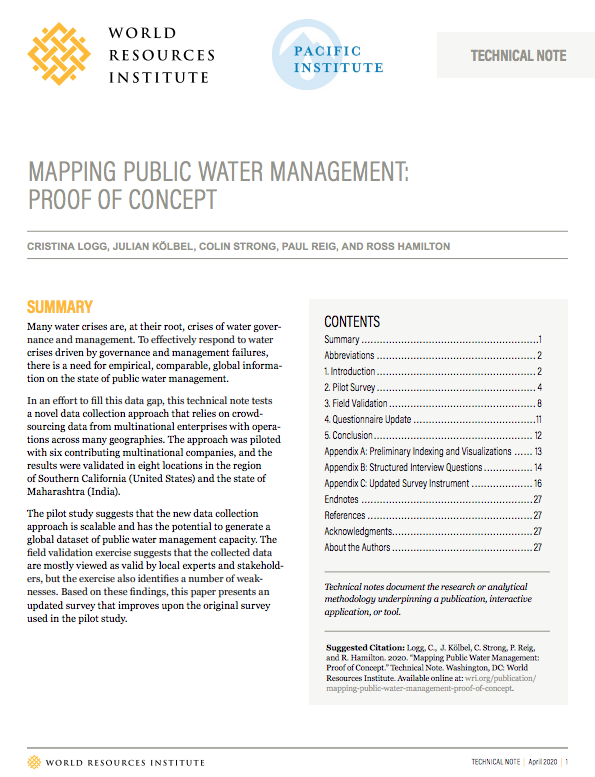Mapping Public Water Management: Proof of Concept

Mapping Public Water Management: Proof of Concept
Overview
What cannot be measured cannot be managed. Poor water management poses major risks to agriculture, industry, and local communities. However, there is a critical lack of information available about local water conditions, making better management difficult.
This technical note, a collaboration between the Pacific Institute and the World Resources Institute, documents the results of a public water management pilot with six companies and 41 facilities, creating an updated question set to better understand conditions of public water management from a stakeholder perspective. It is part of a project to map public water risk by harmonizing and sharing water risk information among industrial water users on access to information on water quantity and quality, the state of infrastructure, the existence and enforcement of allocations and caps, and local pricing systems.
Key Findings
Scalability: Crowdsourcing data from industrial water users through the distribution of this standardized question set is a feasible and scalable method to collect information. An average response time of 17 minutes suggests that information can be crowdsourced effectively with partnered industrial water users.
Validity: The field validation exercises shown in this technical note identify how stakeholders view the generated dataset as credible and valuable for informing local actions. In addition to a high rate of accuracy, validation exercises suggest that the generated data is a reasonable proxy for local water management conditions.

